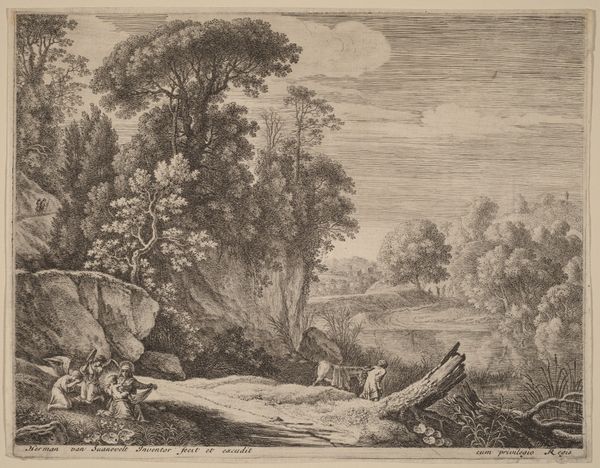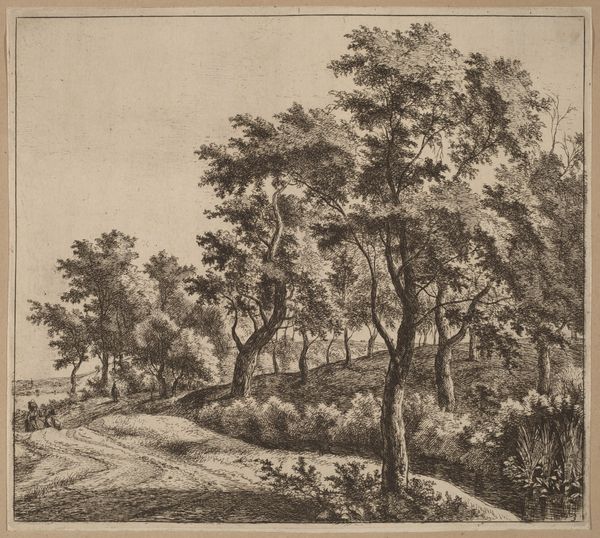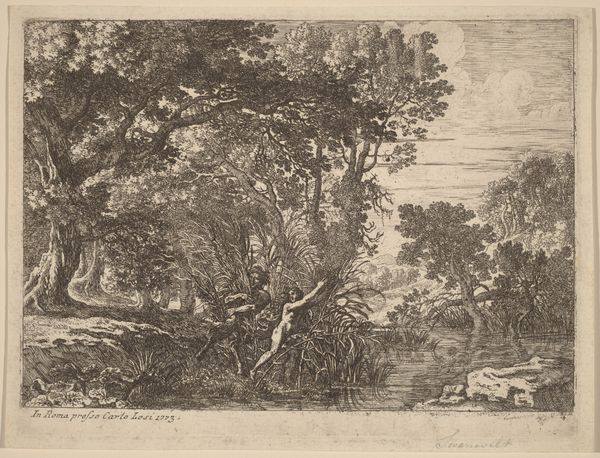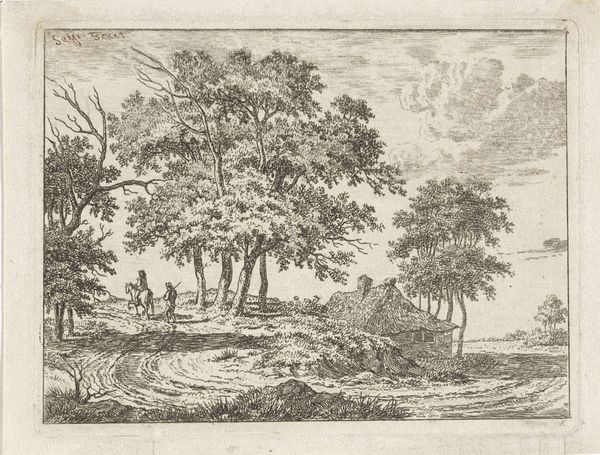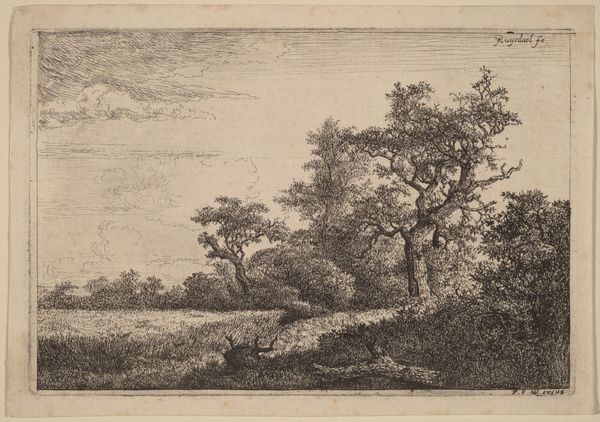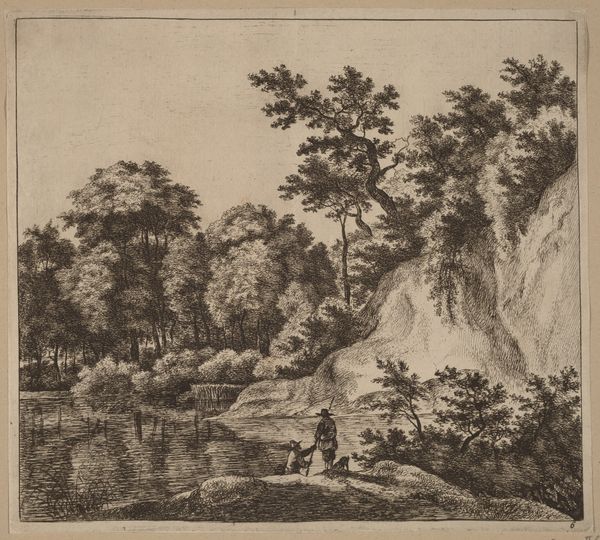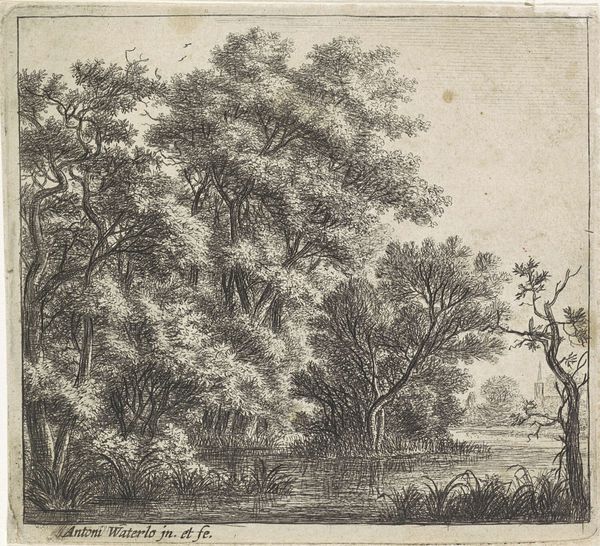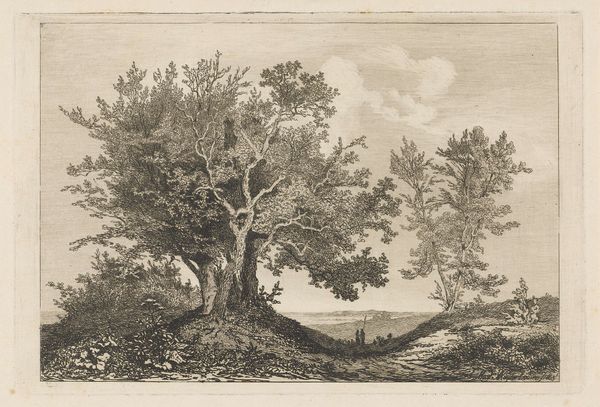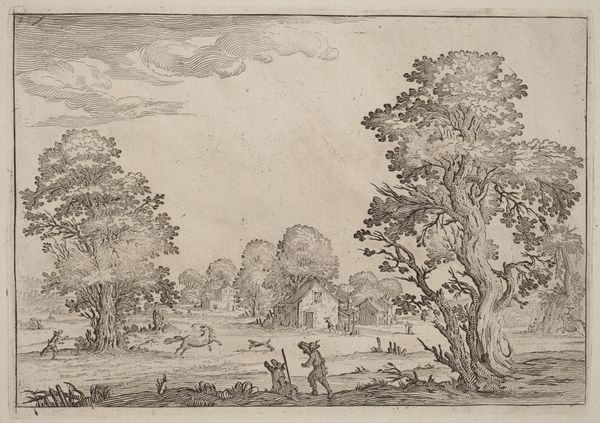
drawing, print, etching
#
drawing
#
baroque
# print
#
etching
#
landscape
#
realism
Copyright: National Gallery of Art: CC0 1.0
Curator: Jan Hackaert’s etching, "Landscape with a Winding Road," immediately brings a sense of tranquility. What strikes you about this landscape? Editor: The intricacy of the etching is fascinating; it's all so dependent on line work and tonal depth using such limited materials! You really get a feeling of scale and atmosphere from the layering and delicate, varying application of line. Curator: It certainly emphasizes Hackaert's mastery of the etching technique, doesn't it? Baroque landscapes often reflect a desire for control and order imposed on the natural world, and the winding road perhaps represents the paths and choices available to individuals. Editor: Control maybe, but I also see a fascination with representing actual textures— the scratch of reeds, the rough bark of trees, even the dusty path all seem like Hackaert was attempting to faithfully reproduce the scene before him through the capabilities of the etching plate. Was there perhaps also a demand or desire from contemporary patrons for accurate depictions of their estates? Curator: Absolutely. Consider also the figures along the road; they seem to be engaged in leisurely activity, perhaps highlighting the socio-economic stratification of the time, where landowners or privileged classes could enjoy such relaxed interactions with nature, contrasting to those laboring upon it. Editor: And the presence of those figures highlights the artist's hand as well— decisions were being made here. They weren't accidental, but placed into the landscape to show scale and perhaps class. Were the materials easily attainable, or were they luxurious? Did access to materials and specialized tools determine the class of the artists that could create them? Curator: These are good points! I think acknowledging both the inherent artistic and social qualities opens up deeper layers within the image for contemplation. The choice to depict this subject and its accessibility through printmaking are both worthy of exploration when contextualizing our modern experience viewing the artwork. Editor: I agree; it really brings the process and potential audiences of the piece to the foreground, asking viewers to acknowledge the artistic labour.
Comments
No comments
Be the first to comment and join the conversation on the ultimate creative platform.
